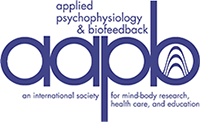The Nerve of That Disease: The Vagus Nerve and Cardiac Rehabilitation
The emphasis on the sympathetic nervous system (SNS) in cardiology has recently shifted to a view recognizing the extraordinarily protective role that the (parasympathetic) vagus nerve plays in prevention and rehabilitation of heart muscle and pacemaker function. This article summarizes some of the epidemiological evidence supporting this premise and describes biofeedback-based interventions that may play a role in the future of cardiac disease prevention and rehabilitation.

Survival (in days) following an ECG referral for patients with high (good) versus low (poor) heart rate variability.

SDNN (a measure of cardiovascular adaptive ability) over three time periods. The treatment group received HRV biofeedback while the controls received treatment as usual (Del Pozo et al., 2004).

Distance walked in 6 minutes by two groups of heart failure patients; those receiving HRV biofeedback vs. those getting an EEG feedback signal. Note this graph only represents the participants with left ventricular ejection fractions (LVEF) over 30 (Swanson et al., 2006).

Heart period evoked potential during slow breathing compared to a baseline condition with the depression at about 200 to 250 milliseconds. Represents the cortical processing, or the R wave.

Contributor Notes
